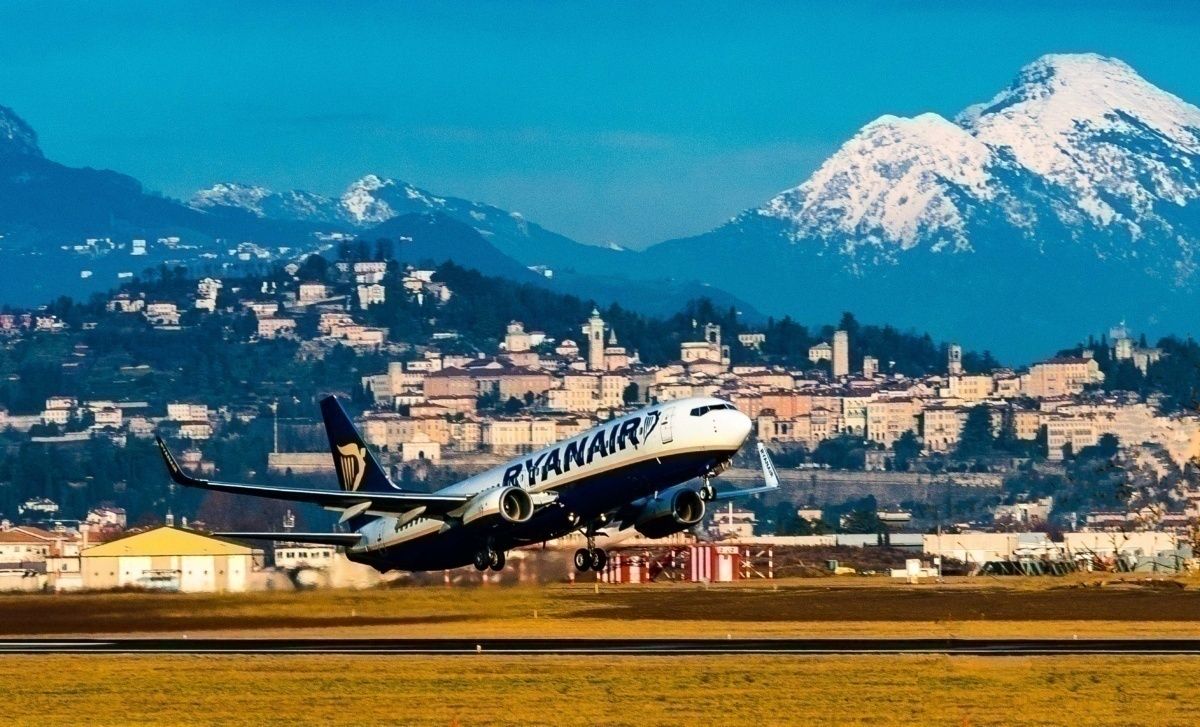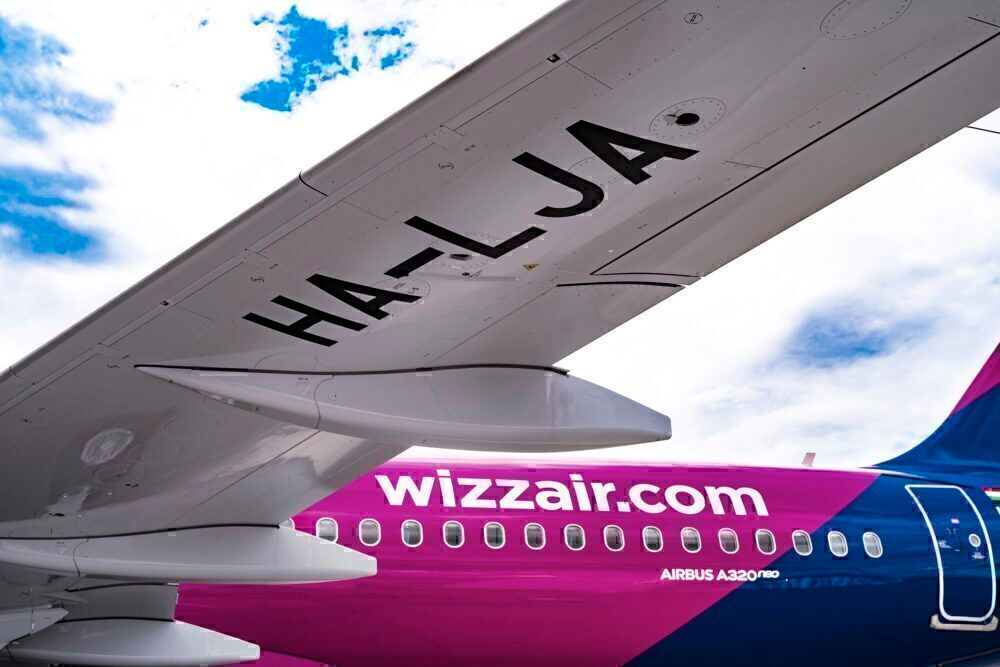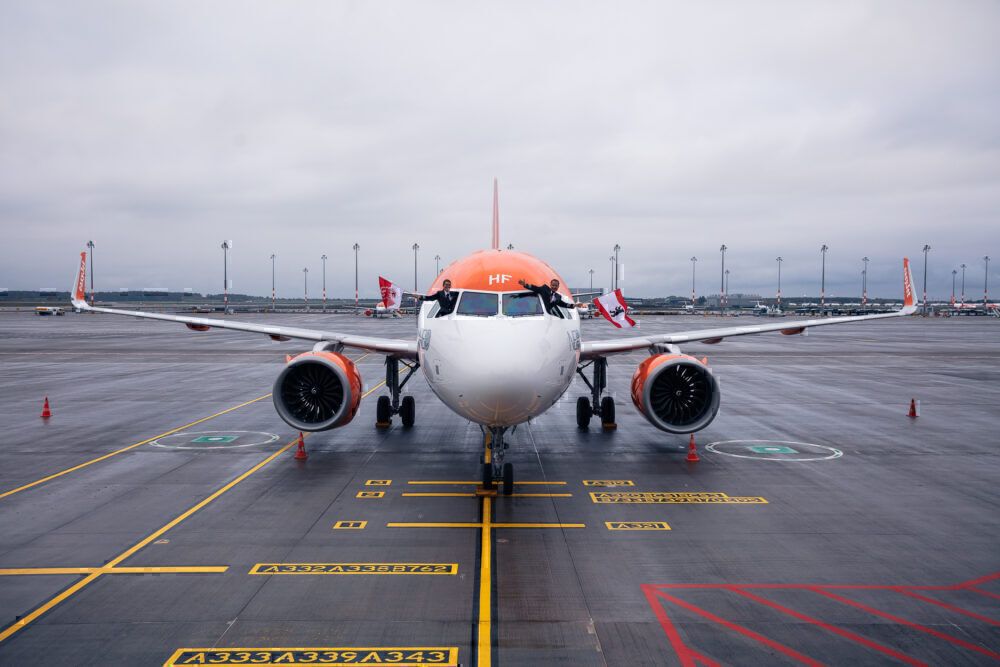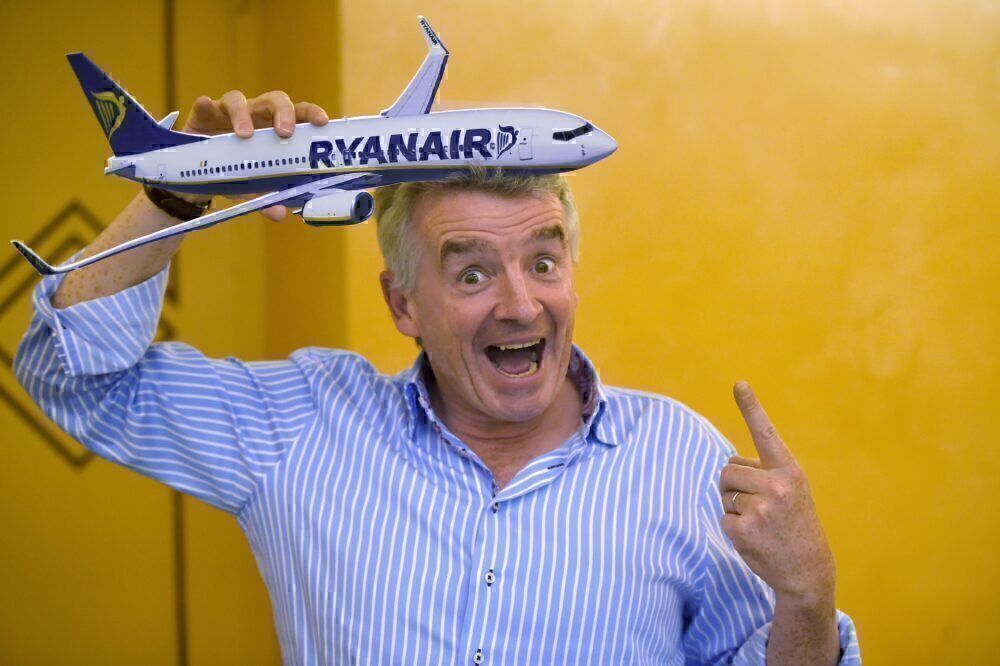Ryanair boss Michael O’Leary believes his airline will emerge from COVID as the lowest cost carrier in Europe. He says that easyJet will no longer be a low-cost at all, and that close competitor Wizz Air will emerge as the second cheapest, but that the gap between Wizz and Ryanair will widen. Let’s take a look at the numbers and see if this prediction is true.
Speaking at an interview for World Transport Market, CEO of Ryanair Michael O’Leary was firm in his belief that the crisis has only solidified its position as the lowest-cost airline in Europe. He said,
“The gap between Wizz and easyJet’s cost base and Ryanair’s cost base will materially widen as a result of COVID-19 and the way we have managed our way through this crisis.”
Ryanair’s strategy has been to avoid taking on debt, and to date, the airline has had no bailout from any government. It has also kept planes and pilots current, giving it the ability to jump on any sliver of demand as soon as it arises.
But are these measures enough to make O’Leary’s prediction true? Let’s take a look.
Stay informed: Sign up for our daily aviation news digest.
Cost of operations
One functional measure of how low-cost are the low-costs is the airline’s cost per available seat mile – CASM (or cost per available seat kilometer – CASK - depending on the airline). For Wizz, it’s pre-COVID CASK (for all of 2019) was 3.37 € cents. In its most recent filing, Wizz Air’s CASK had increased 16.7% to 3.93 € cents. That’s actually pretty good performance, given the challenging environment, but shows how costs are starting to creep up.
Ryanair doesn’t report its CASM/CASK, so it’s not easy to draw a comparison. However, pre-COVID, the airline was noted to have a slightly lower CASK than Wizz, at around 3.2 € cents. Its net debt was lower too, and throughout COVID, it has shied away from accruing more debt. Aircraft deliveries have not taken place, largely due to the MAX grounding, whereas Wizz has continued to bring new fleet on board, adding to its outgoings.
easyJet fared the worst on this metric through COVID. Its cost per seat has increased by a substantial 21.7%, from just under £57 in 2019 to just over £69 this year. Excluding fuel, which went down in price during the crisis, the cost per seat jumped by more than 29%. In terms of CASK, this was up 20% to 6.16p (6.91 € cent), more than double that of its low-cost competitors.
Debt to equity
Perhaps a better measure of cost base can be seen in the debt to equity ratio of these airlines. This calculates the proportion of shareholder equity and debt being used to finance the company’s assets, and is a measure of the financial health of the firm. A ‘good’ debt to equity ratio varies by industry, but for an airline, a good ratio is somewhere around 1 to 1.5.
Wizz Air’s debt to equity ratio is being tracked on the current financial markets at 1.46, while Ryanair’s is 1.12. Both represent healthy levels of debt, and are markers of the unwillingness of both airlines to indulge in unhealthy capital raising activities.
The Ryanair boss highlights the number of sale and leaseback transactions conducted by easyJet to survive the pandemic, as well as its acquisition of a £600m loan from the UK Treasury. These have inflated its debt to equity ratio to 1.81. While that’s still lower than many commercial airlines, for a low-cost carrier, it’s a high ratio, and will impede easyJet’s ability to offer low fares going forward.
Operational choices
Both easyJet and Wizz have begun moving out of their comfort zones in the past months, both pre-COVID and during the pandemic. For example, Wizz has struck out into western Europe in a big way, launching new bases and routes, often at expensive airports such as Gatwick.
easyJet too has pulled out of a number of smaller, cheaper airports, and has renewed its focus on larger, higher cost airports. No longer operating out of Stansted or Southend, easyJet is counting on its strong position at Luton as well as Gatwick for its future operations. It has also consolidated its presence at a number of primary airports in Europe. For O’Leary, this is a big mistake by the orange airline. He said,
“Given that they will shrink the business back to those core, high-cost airports – Gatwick, Paris, Berlin, Switzerland – it will still have a strong niche as a higher cost, higher fare, mid-level model. But as a competitor to Ryanair, I don’t think they would be in the neighborhood.”
O’Leary admits that Wizz will inevitably be the next closest competitor to Ryanair in terms of fares, but is firm in his belief that his strategy of avoiding debt and focusing on cost-conscious operations will only lengthen Ryanair’s lead in the low-cost market. He concluded,
“Wizz, actually, will emerge reasonably well. Because they’re set up in Eastern Europe, they have a more flexible labor model. I think the challenge for Wizz coming out of this is that they’re doing a lot of sale and leasebacks on their aircraft and their aircraft costs are very high. The gap between them and Ryanair on aircraft costs are widening.”
It will take some time before we see exactly what the impact of the pandemic has been on Europe’s low-cost market. But the Ryanair boss speaks a whole lot of sense and could be right on the money that his airline will be the lowest cost carrier in Europe for some years to come.
What do you think? Will Wizz continue to battle Ryanair for low-cost greatness, or is Ryanair free to rein supreme in the cheap fares market in Europe? Let us know in the comments.




